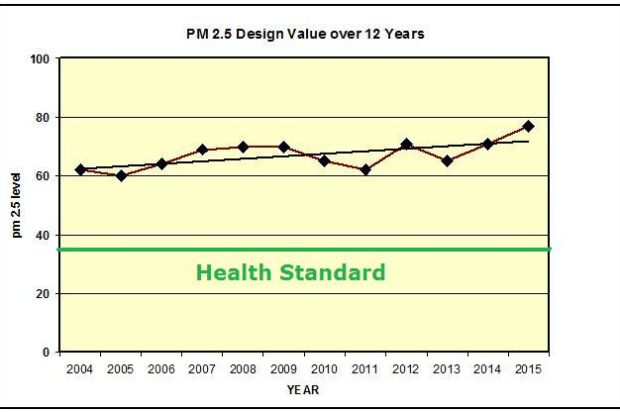
By Tom Frantz
There is an important bill in the state legislature this year, SB 1383, which would mandate a 40% reduction of methane from dairy sources by 2030. If passed and signed, the California Air Resources Board (CARB) would determine how to get the reductions. In fact, CARB has already said this will be a goal, with or without legislation, as they currently update their AB 32 scoping plan for greenhouse gas reductions during the years 2020 to 2030. This bill would put teeth into those goals.
Methane is a Short Lived Climate Pollutant (SLCP) and is about 80 times more powerful than carbon dioxide (CO2) in terms of heating the planet. Methane gas amounts to 8-25% of total greenhouse gases emitted in California each year. This wide range is because there is political controversy over whether methane should have an atmospheric lifetime of 20 years or 100 years. The larger timeline increases the global warming potential of methane about 3 times and is the more realistic and scientific number.
Dairies, landfills, plus the oil and gas industry are the biggest producers of methane, from largest to smallest. Dairies are producing over 50% of the total when all dairy cows, such as those that go for beef, are considered. California milk factories are therefore directly responsible for more than 15% of California’s climate warming emissions when methane and some other dairy related emissions are counted and the larger warming potential for methane is used. We also have the fact that these same dairies are responsible for 20% or more of our health damaging air pollution here in the San Joaquin Valley. Nitrate pollution of groundwater is another negative environmental factor against them.
There are two main sources of methane at dairies. The first are the burps and farts of the cows as they digest their feed. The burps predominate. The second is how the manure is handled. When the manure is put into a lagoon and aerated with giant paddles it emits a huge amount of methane and ammonia gas into our air. Fortunately, there are dietary and feed changes that can decrease the methane from cow burps. Also, the manure can be collected daily and composted to greatly reduce methane from current handling methods and there the co-benefit of decreased ammonia emissions. A by-product of composting would be a soil amendment that sequesters carbon in local soils while reducing both water use and imported synthetic nitrogen fertilizer.
Nearly half of all milk processing in California is geared towards making soft and hard cheeses. About 60% of all this manufactured cheese is Mozzarella. This bland, white cheese, used mostly for pizza, is therefore directly linked to around 25% of the greenhouse gas emissions from dairies. Consumption of pizza may therefore be indirectly related to between 5 and 15 million tons of GHG emissions per year.
Two of the biggest cheese makers in the San Joaquin Valley are Kraft and Borden (Elsie the Cow). Kraft makes cheese in Tulare County just north of Pixley and Borden makes cheese near Turlock in Stanislaus County. Many other cheese processors dot Hwy 99 throughout the valley. Several of the largest make cheese under many different brand names for different markets. Hilmar Cheese, in Merced County, may actually be the largest cheese producer in California.
The dairies obviously need to do their part to reduce climate change. They are a significant part of the problem.
But, the dairy industry is lobbying hard against these newly proposed regulations. They claim that even though their methane emissions are high in total, their emissions per unit of production are among the lowest in the world. This is a controversial claim because the studies which show less efficiency in Asia and Africa use dubious assumptions about feed, production, and the general relationships of these cows to the greater culture they are part of.
The factory dairies in California will hopefully come under strong regulations but the consumption of dairy products by residents must take some of the burden as well. A public service campaign to convince people of the fact that dairy products are not all that good for them would benefit the health of many and put significant downward pressure on the quantity of factory milk production in California.
This campaign could start by encouraging residents to cut their consumption of pizza in half. With widespread adoption, that personal act alone could cut global warming emissions in California by up to 7 million tons of CO2 equivalent per year. This would be as effective as taking 2 million cars off the road or putting solar panels on 4 million roofs. It would be a win-win for healthy bodies and a healthy planet.
*****
Longtime clean air advocate Tom Frantz is a retired math teacher and Kern County almond farmer. A founding member of the Central Valley Air Quality Coalition, he serves on the CVAQ steering committee and as president of the Association of Irritated Residents. CVAQ is a partnership of more than 70 community, medical, public health, environmental, and environmental justice organizations representing thousands of residents in the San Joaquin Valley unified in their commitment to improving the health of Californians. For more information, visit www. calcleanair.org.
